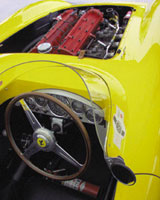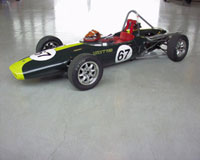Olympus C 2500L Digital SLR Zoom Camera
Olympus believes they have
the digital camera for you in the new C-2500L SLR and have invested
heavily in a media blitz on its behalf. The word is out and a lot of
people are interested. So, when I received one for a trial I was as
eager to see if it is in fact the digital camera which will turn the
tide of interest on the part of professionals and serious enthusiasts.
It has a very clean, clear SLR viewfinder; a 2.5 megapixel chip capable
of producing files which will make fine quality 8x10" image prints;
a 3x zoom lens that's an aspheric optical glass design; a powerful
accessory hot shoe dedicated electronic flash in addition to a small
built-in unit. All the qualifications that meet most expectations. But
what those features and specifications actually result in, when applied
to the experience of using the camera and seeing the picture results,
is the question. So without further ado: |
||||
I didn't know what this day would bring in picture opportunities, so I wanted to have as much "digital" film as possible. The C-2500L has two slots for memory cards, including one for the SmartMedia 32MB card supplied with the camera, as well as a slot for a Compact Flash memory card and I happened to have a 16MB card. That total at the high quality JPEG setting provided the equivalent of three rolls of film. Fortunately, I didn't need it all. When I got home and downloaded the pictures using the serial to computer camera connection and the Camedia software, I found this method of accessing the photo files is tortuously slow. I was on the phone the next morning to get a USB adapter for my computers (works on Mac and Windows) to read SmartMedia cards directly. The image files were still on the SmartMedia card in the camera when I received the USB device, so I put in the USB connector slot, and the folders popped right up on my desktop so I could download the files directly to my hard drive--it took only a couple of seconds per image file. |
||||
Once downloaded, the image
files were opened in Photoshop. I first checked the histogram to see how
accurately the camera placed the data (exposure control) and how well
it handled subjects with different brightness ranges. The result was that
the camera AE functioning is quite accurate in a wide range of lighting
situations and with varying subjects. I did also find that the gamut is
about the same as the exposure range of a typical slide film. So essentially,
when working with the C-2500L one should be sure the exposure is adjusted
to capture detail in the highlights, and if the subject is too contrasty,
then only some shadow detail will be lost. |
||||
With just a dozen shots used
to get an action shot, the rest of my "digital" film was mostly
used to take pictures of the antiques sports cars in the paddock. Including
Ol' Yeller which raced at the Santa Barbara Airport in the mid-50s
when I tried my hand at sports car racing while a student at Brook's
Institute. I tried all kinds of close, tight, creative angles and some
shots I would'nt dare try even with a 35mm film camera because I'd
never pull the depth of field. This is one of the advantages of dedicated
digital cameras with a small 2/3" CCD. The lens is short, just 9.2mm
focal length at its widest zoom setting, and therefore has incredible
depth of field even with the aperture close to wide open. |
||||
The one test I would have hoped
for, but wasn't possible, involved my missing photographing a bevy
of show girls in Las Vegas. The way the manual shutter/aperture control
is set up on the C-2500L, and in consideration of the camera's dedicated-only
flash exposure control arrangement, even through the hot shoe, using studio
electronic flash is not practical. And, unfortunately the one dedicated
multiple flash system I have is proprietary and will only work with the
camera brand for which it was made. I had the incentive, so I made some
trials with both of my studio systems, and with the dedicated multiple
flash system, and nothing worked. I was told when the camera was announced
that some kind of hot shoe to PC adapter would be coming, but unless it
can lock the camera into a discrete set of aperture settings that are
consistent at all zoom lens settings, I would wonder how it would work. |
||||
Is The Olympus C-2500L The Camera You've Been Waiting For? From my experience using it and from the results obtained, for what many photographers will expect of it, I think this camera will be a good choice for those who have been waiting to get off the fence and into digital shooting. At an estimated $1499 retail price some will say the price is still high, but really if you just deduct a year's film and processing, it's in the range of any good quality 35mm SLR. And then, compared to the several times as costly professional press digital/35mm hybrids, there's little the Olympus can't do and the results are just as good if not better in some cases. Yes, if this camera doesn't move you off the fence, you may as well call that uncomfortable position your permanent home. |
||||
Technical Specifications Image Pickup:
2,500,000 pixel 2/3" progressive scan RGB CCD |
||||
Exposure Compensation:
+/- 2 EV in 1/3 EV increments |
- Log in or register to post comments










































